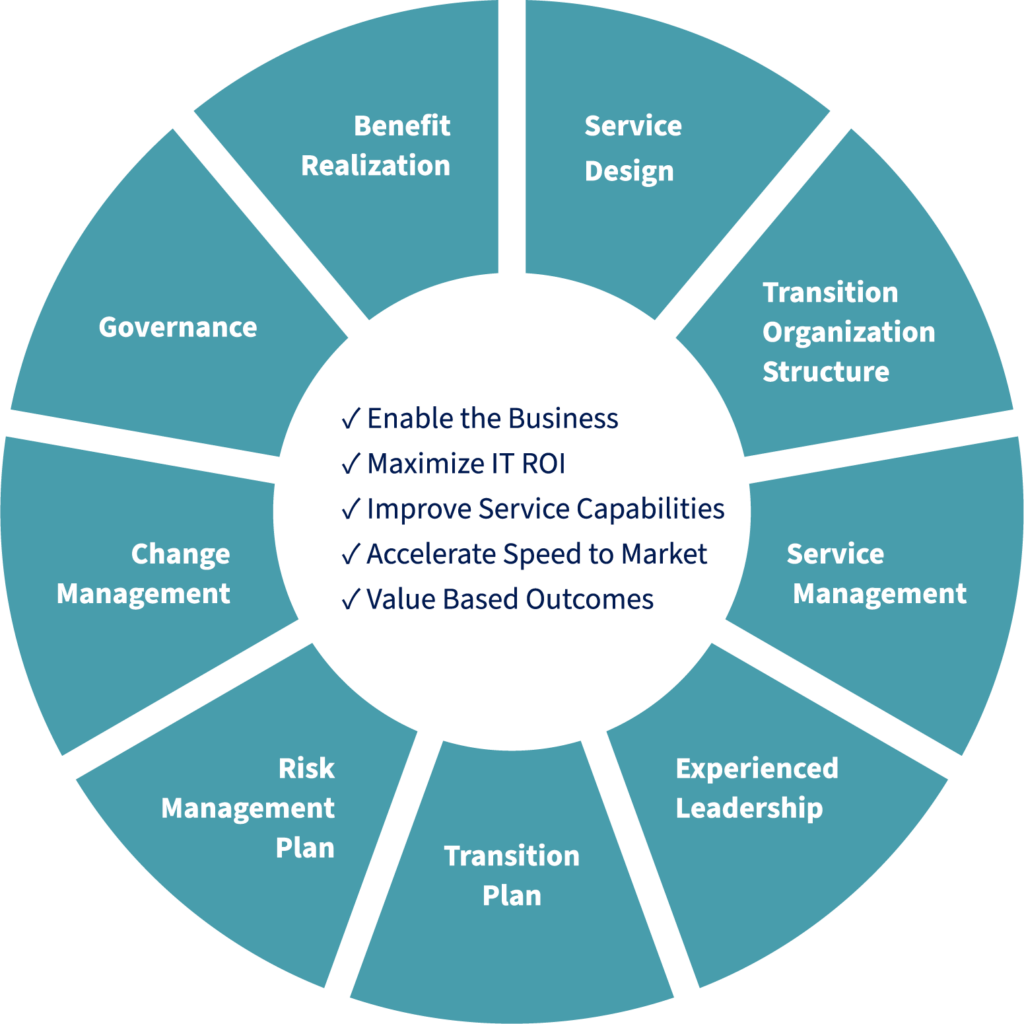Critical Success Factor Considerations for Service Transitions
Whether you are planning to transition a new service into production, transitioning suppliers, or integrating services postacquisition, paying particular attention to the transition process is critical to the success of capturing the intended benefits.
A comprehensive transition plan and experienced transition management resources are essential to mitigate risks associated with costs, time to market and realizing the intended benefits of the service being transitioned.
Service Transition Critical Success Factors

Benefit Realization — Create a tracking process to periodically report out on benefit realization progress. Expected benefits and value are based on the timing and business justification identified during the demand management process.
Service Design — Include design elements to aid service transition to address automation, ease of use, frictionless user experience and widespread adoption.
Transition Organization Structure — Establish a temporary or permanent transition PMO. Service transition requires cross-functional organizational participation. Identify ownership and decision makers. Assign subject matter experts to participate in the planning of transition and management of tasks.
Service Management — Develop a detailed service management plan including the integration to your service management framework early on to be prepared for day one.
Experienced Leadership — Assign or hire experienced transition management professionals. Transition project management is a specialty discipline. Experience improves efficiencies and the mitigation of risk.
Transition Plan — Develop a separate transition plan for each new service change event. Integrate each service transition plan into a program plan when multiple dependent services are in scope.
Risk Management Plan — Develop and actively manage a risk management plan to include all identified risks, probabilities, cost impact and mitigation strategies.
Change Management — Services are consumed by people. Understand the human element of change by identified stakeholder, create a change management plan and plan the transition approach accordingly.
Governance — Develop a transition governance structure with a defined cadence to review, make decisions and act on impacting transition plan constraints.
